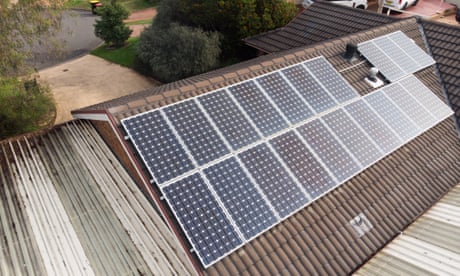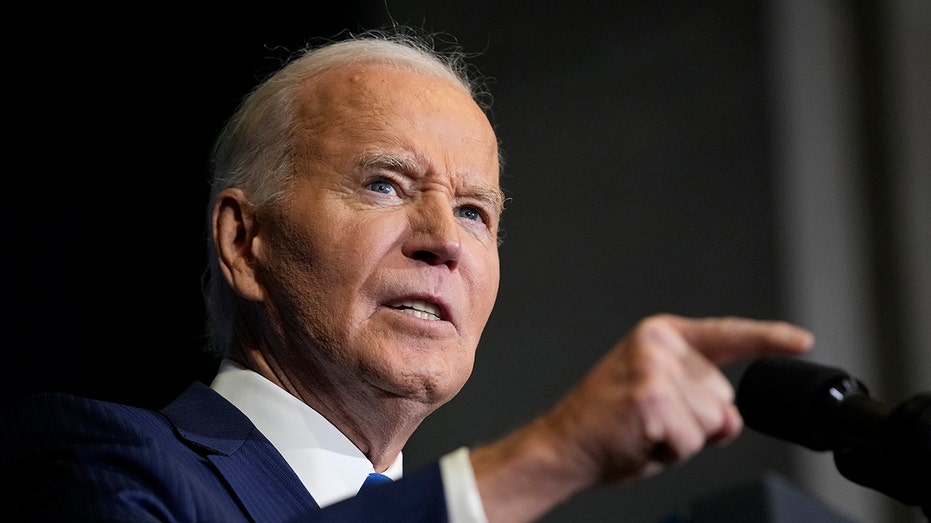- by foxnews
- 07 Jan 2025
Gas-fired power falls to lowest level since 2005 as Coalition pushes ahead with its ‘gas-fired recovery’
Gas-fired power falls to lowest level since 2005 as Coalition pushes ahead with its ‘gas-fired recovery’
- by theguardian
- 10 Feb 2022
- in news

The exponential rise of renewable energy led to it providing more than 30% of Australia's electricity in 2021, while gas-fired power fell to its lowest level in 16 years.
Data collected by OpenNEM, an open source platform, shows renewable energy provided 31.4% of electricity within the national market covering the eastern states and South Australia last year. It was 32.2% in the separate West Australian grid.
The national figure has quickly surged beyond the national renewable energy target, which required electricity retailers to sell about 23% of generation from solar, wind and hydro plants by 2020.
Gas-fired power - which is being backed by the Morrison government through hundreds of millions of dollars in funding as part of what it calls a "gas-fired recovery" from the pandemic - has fallen to its lowest level of generation since 2005.
It now provides just 5.7% of the total. Its decline from a high of 12.8% seven years ago is largely attributed to its relatively high cost and the sharp increase in the amount of cheaper solar and wind energy available.
Coal-fired power provides 62.8% of electricity, its lowest level in both proportion and total amount since the interconnected national market began in 1999. Back then, it was 95.4% of grid generation.
Tim Baxter, a senior researcher with the Climate Council, said renewable energy had increased exponentially since 2018, when it was about 20% of the total share.
The surge had initially been largely driven by a rush to fill the national renewable energy target, which the Morrison government did not extend or replace. It had continued due to the plunging cost of solar and wind, state-based renewables schemes and corporates increasingly promising support for zero-emissions energy.
"Electricity is now the cheapest it has been in almost a decade, and we have solar and wind to thank for that," Baxter said.
The most significant rise has been in household solar systems. More than 3m homes have photovoltaic panels, including at least 360,000 systems installed last year, according to the Clean Energy Regulator. Regulators say that has created some new grid management challenges as solar energy floods into the system and makes other forms of generation uncompetitive when the sun is high in the middle of the day.
Solar energy provided 12.3% of electricity generated in the national market. Nearly two-thirds of that came from rooftops, the rest from large-scale farms. Wind contributed 11.3% of electricity and hydro power 7.8%.
In contrast, gas-fired power had declined due to it being the most expensive electricity fuel available. Baxter said while there may be some year-to-year variation, the fall in its use for power was expected to continue as other "dispatchable" sources that could be called on when required became available. They included pumped hydro, batteries, virtual power plants and demand response programs.
Baxter said it made the government's support for gas power - including $600m for a new gas-fired generator at Kurri Kurri in the Hunter Valley and another four listed for potential public underwriting - look "increasingly irresponsible and economically reckless".
"Let's be clear, this record [of solar and wind lowering electricity prices] has nothing to do with the federal government, which has been missing in action and leaving all the heavy lifting to the states and territories," he said.
The Kurri Kurri gas plant, to be built by the public owned Snowy Hydro company, has been criticised as unnecessary to ensure a secure electricity supply is maintained once the nearby Liddell coal plant shuts next year.
Kerry Schott, the former head of the Energy Security Board, was among those who said a new gas plant in the Hunter did not make commercial sense given there were cheaper and cleaner alternatives, but the head of Snowy Hydro, Paul Broad, this week predicted the country would continue to build "a lot more" gas-fired stations.
Federal Labor last week said if it won the upcoming federal election it would require the Kurri Kurri station to run on 30% green hydrogen made with renewable energy when it opened next year, and 100% green hydrogen as soon as possible. Chris Bowen, the opposition energy and climate spokesman, said this could cost up to another $700m, inflating the potential total to $1.3bn.
Green hydrogen has been widely backed as a significant future energy source as the world cuts greenhouse gas emissions, but some experts have ranked electricity generation near the bottom of its likely commercially viable uses. It is seen as important in creating "green" steel, aluminium and ammonia, among other products.
Labor has also promised a $20 billion off-budget "rewiring the nation corporation" to accelerate the construction of planned electricity grid links. Modelling for the opposition by the firm RepuTex suggested it could lead to renewable energy providing 82% of electricity by 2030, compared with 68% on the current trajectory under the federal Coalition. The Greens say the country should be aiming for 100%.
- by foxnews
- descember 09, 2016
'Seat squatter reverse' is surprising air travel plot twist triggering reactions on social media
A social media user shared an unexpected "seat squatter" story that included a strange turn of events as the traveler allegedly gave up a first-class seat in exchange for a downgrade.
read more


